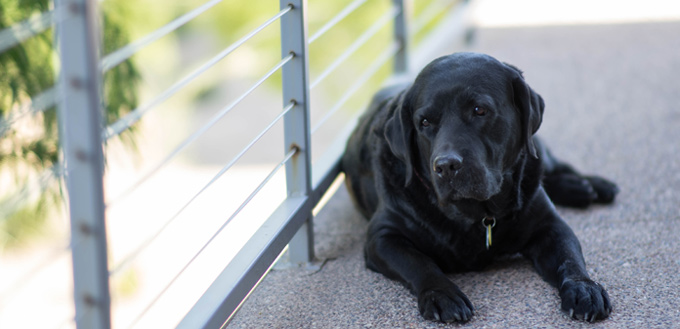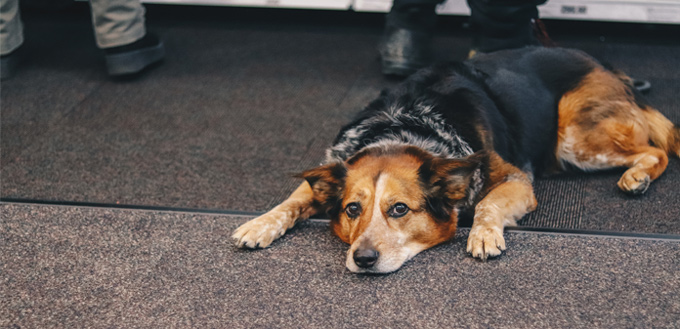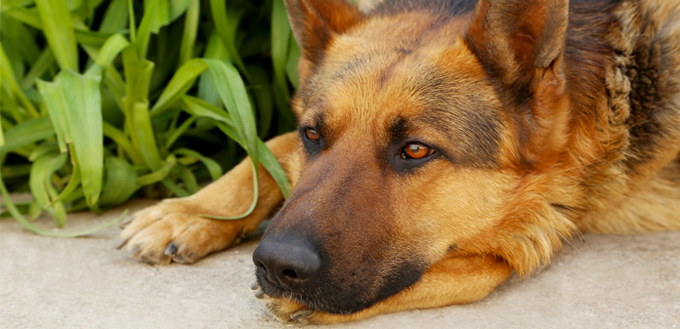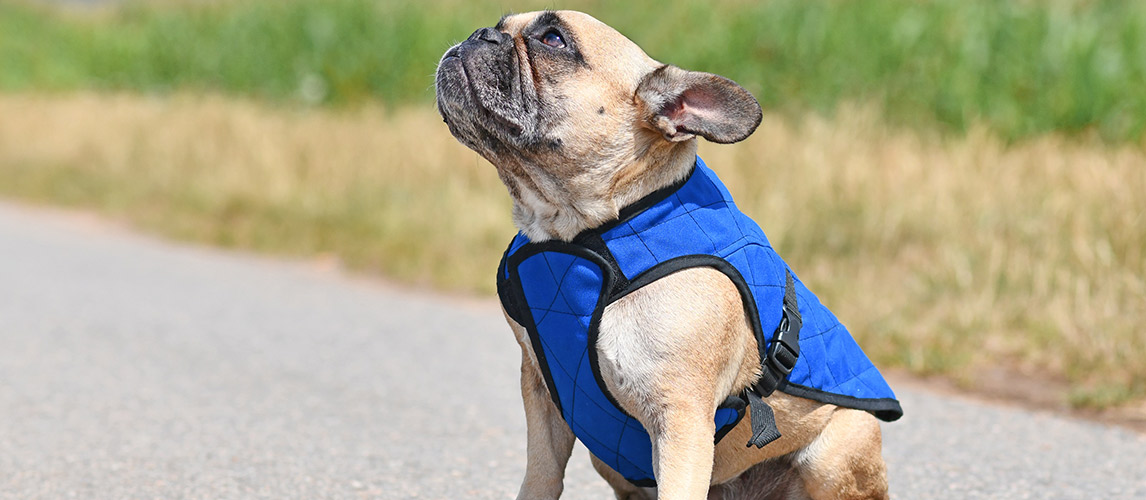Almost every other pet parent who has to leave home in the morning will see a set of very peculiar behavior in their dogs. Experts call this canine separation anxiety and it is considered as just one of the many types of anxiety conditions that can be displayed by our dogs. Unlike humans, however, assessing the presence of separation anxiety in dogs can be especially difficult since their only means of communication is through a variety of behaviors. That is why it is important for pet parents to become knowledgeable on what canine separation anxiety is, what causes it, what behavioral manifestations you should look for, and what you can do to help your beloved pet get through its separation anxiety.
What is Canine Separation Anxiety?
It is quite difficult to make a very conclusive definition of separation anxiety in dogs, as we already stated in the beginning. However, the general notion is that separation anxiety is characterized by a variety of dog behaviors that are only manifested once the dog’s human master leaves the house. These same behaviors are not observed if the human master is around. It is the physical separation between the dog and the individual who it considers as its ‘significant other’ that triggers these set of behaviors.
Check out our guide on Anxiety Supplements for Dogs.

True Versus Simulated Separation Anxiety
There is an interesting, albeit intriguing view on why dogs display such behaviors whenever they are left alone. This has something to do with the possibility of having simulated canine separation anxiety. What this essentially means is that your dog doesn’t have true anxiety every time you leave it alone in your home. Your dog has simply learned that by doing these behaviors, it can get the attention it needs from you. This is even if the attention it will get is a verbal scolding later on. The fact that you gave it attention is enough for the dog to repeat the behavior since it is its only way to get you to interact with it.
There really is no way to support such claims, but for those who have worked with dogs that are supposed to have separation anxiety only to find out later that these are nothing more than attention-getting tactics can truly attest to the presence of simulated separation anxiety in dogs.
Causes of Separation Anxiety in Dogs
It is very tricky to pinpoint the exact cause of separation anxiety in dogs. This is perhaps because of the dearth of knowledge showing causality between several events and a series of dog behaviors. Some of the most oft-cited reasons or possible causes of canine separation anxiety include the following:
Change of Family or Even Guardian
Canine behaviorists observe that separation anxiety is highest among dogs that have been put in shelters. Being transferred from one family to the next breaks the dog’s trust and will do ‘almost anything’ to keep the new family or guardian from ever leaving it again. Separation anxiety is also observed to be high among hounds that have been abandoned or even given to another family or individual as guardian.
Relocation
A change in location is also known as one of the possible causes of separation anxiety development in dogs. In human psychology, relocation anxiety is always related to a lot of unanswered ‘what-ifs’. It is the uncertainty of the new place that is making some people anxious. Perhaps some dogs also have this predisposition for such feelings of apprehension over a place that is relatively new.
Time-Related Changes
In addition to relocation, another possible cause of separation anxiety in hounds is the sudden change in scheduling. For instance, they may have already grown accustomed to seeing their human masters leave home at 8 in the morning and come back home at exactly 6 or 7 in the evening. If this schedule was to change to 10AM to 10PM, then there is a possibility that canine separation anxiety can develop.
Changes in Family Structure
If there is a sudden change in the family structure such as when somebody dies or moves away, it is also possible that separation anxiety can also be triggered.
How Do You Know If Your Dog Has Separation Anxiety?
There is no single manifestation that will point to the presence of canine separation anxiety as different hounds will have different ways of expressing their frustrations, insecurities, or anxieties. Generally, dogs that are known to have separation anxiety will present with the following manifestations:
- Urinating or defecating in the house or in areas where they normally wouldn’t
- Barking or even howling even though there is no reason for doing so
- Chewing on furniture, door frames, carpet, bedding, or other items in the house
- Digging at doors, walls, and other fixtures
- Destroying household items such as vases, throw pillows, and the like
- Escaping from its confined space or through the fence of your property
- Pacing or walking around in circles or within the same path over and over
- Eating the same feces that they excreted, a condition known as coprophagia
These behaviors are not specific to separation anxiety. As a matter of fact, many of these manifestations can mean a lot of different things. What is critical is the timing of these manifestations. If these behaviors are observed all the time regardless of the possible causes we have outlined in the preceding section, then it is possible that you are looking at a more generalized canine behavioral problem. If these manifestations only occur whenever the dog is left alone in the house and never in the presence of its family or its recognized pack leader, then it is highly probable that you have a dog suffering from separation anxiety.
Your veterinarian or perhaps an animal psychologist or behaviorist should help you determine whether the manifestations are indeed attributable to separation anxiety in dogs. First, any organic cause of these manifestations, especially the urinating part, should be ruled out. Dogs that have urinary incontinence will usually present with uncontrollable voiding. This can be brought about by urinary tract infections, kidney disease, bladder stones, Cushing’s disease, age-related weakened urinary sphincter, diabetes, neurological problems, spaying- or neutering-associated hormonal problems, and certain abnormalities in the dog’s genitalia. These should be ruled out first if you want to be certain that your dog is suffering from separation anxiety.
There are also certain medications that increase the frequency of urination. If your dog is taking any of these medications, then there is a likely chance the frequent soiling may not be related to separation anxiety at all.

Dogs that have not completed their house training can also lead to increased soiling in the house. There are also canine boredom, scent marking, excitement or submissive urination, nuisance barking or howling, and canine juvenile destruction to rule out.
Perhaps the most important element here is the timing of the occurrence of these manifestations. If they are only observed whenever the dog is left alone in the house, then there is a strong likelihood it is suffering from separation anxiety.
How Can You Help Your Dog Deal with Separation Anxiety?
The management of canine separation anxiety can be quite complicated especially if you’re looking at true separation anxiety. If your hound has a milder form of separation anxiety, then counter-conditioning can help. The goal is to replace the undesirable behavior with something that is more pleasant and more relaxed. In essence, what you would like your dog to re-learn is to associate being alone with enjoying more pleasant things such as being able to play its favorite toy or enjoying its favorite treat. Here are a few tips.
- Fill a KONG or any other treat-dispensing toy with a low-calorie, highly nutritious dog treats or especially-formulated kibbles so your dog will have something to do while you’re out.
- Install wireless dog camera systems that allow you to remotely ‘communicate’ with your dog wherever you are. Choose one that has a treat-dispensing mechanism that can be programmed to release treats at certain periods of the day or even remotely controlled to dispense the treat.
- Leave interactive or puzzle toys for your pet. If you can integrate treats in these toys the better it is.
- If you use the KONG or the treat-laden interactive toys, or snuffle mats, make sure to keep these out of sight as soon as you arrive home so they will only associate these objects whenever your dog is alone.
Related Post: Best Dog Puzzle Toys
If your pet happens to have moderate to severe canine separation anxiety, the treatment can be a little bit of a hit-or-miss. In many cases, it is best to work with a professional dog behaviorist who can guide you in the various aspects of the therapy. Keep in mind that the tricks we mentioned above won’t typically work in dogs with moderate to severe anxiety because their concern is on their ‘loved ones’ not being at home.
The therapy consists of several sessions of desensitization and counterconditioning. The idea is to assist the dog in gradually learning to be alone and to associate it with something that is safe and comfortable. Remember that dogs with true separation anxiety will have serious insecurities. They feel it is not safe for them to be alone. The therapy can progress as follows.
Related Post: Best Dog Camera
Use Pre-Departure Cues in Different Times of the Day Without Leaving the House
There are dogs that already become anxious the moment their guardians start performing pre-departure activities like putting on make-up, getting the keys, or even wearing one’s shoes. These are referred to as pre-departure anxiety. Treatment will involve doing these exact same cues without leaving the house. So you can put on your make-up and watch TV all day long. Over time the dog learns that performing these pre-departure activities doesn’t necessarily mean it will be left alone.
Observe Shortened Absences
The key here is to plan your departures or absences to be as short as possible so your dog will not be upset.
For instance, you can train your pet to sit or even lay down and stay just outside your bathroom door while you go inside, leaving the bathroom door open. You can start with 2 minutes, gradually increasing the length of time your dog doesn’t see you. You can also progress to other doors in the house except exit doors. If you think your dog already knows the value of ‘stay’, then you can start working with your dog staying at the front door while you’re just outside, but still leaving the door open. Again, do these ‘stay’ games gradually. Your dog should learn how to play the ‘stay game’.

Once it knows how to play the ‘stay’ game, you can integrate the separation maneuver. Do the same trick with your dog staying in front of the door. Now close the door briefly for about 1 or 2 seconds. If your pet doesn’t behave anxiously, you can increase the ‘out-of-sight’ time to 5 seconds. Take your cue from your dog.
If your dog isn’t showing signs of anxiety during brief separations of about 10 seconds, you can start incorporating the counterconditioning methods we have suggested above for mild cases of separation anxiety.
It is important to make sure your dog is completely relaxed in between separations. It is also critical to proceed in these maneuvers in a quiet, calm, and confident manner.
Treating separation anxiety in dogs can be very tricky. One of the most critical errors pet parents do is progressing through the desensitization and counterconditioning process rapidly. Doing so will only heighten the dog’s anxiety problems as you are not properly teaching it on how it needs to control the excitement of your return.
Remember that the anxiety responses of dogs typically present within the first 40 minutes that the dog has been separated or left alone. That is why the desensitization and counterconditioning treatment should gradually build up until your pet is fully able to control its anxious behaviors within the first 40 minutes. In short, you should slowly build up your absences to 40 minutes. And if you’re progressing at 5 to 10 seconds of absence or separations per session, you’re looking at a particularly lengthy treatment.
Separation anxiety in dogs can adversely affect our lives, not only our pets. Knowing what causes it and what you can do about it should help you better care for your dog that is suffering from this kind of anxiety.
Related Post: Trigger Stacking in Dogs
Sources:
- Separation Anxiety in Dogs, Pets WebMD
- Sherry Woodard, Separation Anxiety in Dogs, Best Friends Animal Society
- Separation Anxiety, ASPCA








